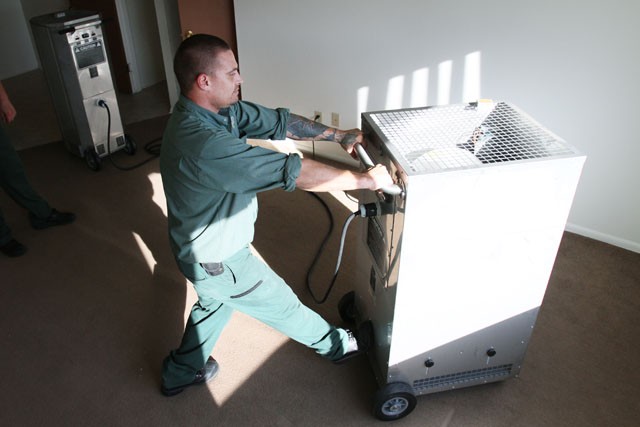They suck human blood while their prey sleep, silently infest entire living spaces, and have been known to cause insomnia and anxiety in their victims. TheyâÄôre bedbugs, and theyâÄôre invading Minneapolis.
The number of complaints for bedbugs in Minneapolis has increased exponentially since 2001, and is at its highest this year, said Mike Vraa, a lawyer from the HOMEline tenant advocacy organization. Complaints in Minneapolis have increased from zero in 2001 to more than 272 this year, as of the beginning of this month, he said.
The insects are making a resurgence throughout big cities in the U.S. after a half-century absence, according to the Centers for Disease Control. Experts have not identified a specific reason why or how the bugs made a comeback.
Resolving bedbug issues âÄútakes vigilance,âÄù Vraa said. âÄúI donâÄôt think that Minneapolis is going to have some sort of epiphany.âÄù
The University of Minnesota area is not immune from the epidemic.
Jeremiah Riopel, heat division supervisor at PlunkettâÄôs Pest Control, said he gets about 50 cases in Minneapolis per month, including many in Dinkytown.
One University student, who asked to be identified only as Sarah because of the stigma associated with bedbugs, has had problems with the pest in the Dinkytown area for the past two months. Before she moved in, Sarah was assured that there were no pest problems.
âÄúI started getting all these bites on my arm,âÄù she said.
âÄúItâÄôs definitely frustrating to deal with this issue because I have never had them in my life before I moved,âÄù she said.
Eradicating the problem is difficult, Vraa said. âÄúItâÄôs a pretty big deal having to pay for it.âÄù
Exterminating bedbugs costs $1,100 to $1,600, at $1 to $1.50 a square foot, said Jeff Berens, exterminator from AmericaâÄôs Best Construction and Remodeling.
There are two main ways to exterminate bedbugs, Riopel said. Chemical treatment is cheaper, but it doesnâÄôt solve the problem. Berens said that it takes up to 30 days for a chemical treatment to be somewhat successful, whereas heat treatment, or thermal remediation, takes only one day and stops the life cycle of the pest.
Sarah said it was difficult to pay for extermination with her tuition costs and rent.
The landlord in her building pushed her to buy an array of chemicals to try to eliminate the bedbugs, but she couldnâÄôt afford them.
Bedbugs have been a major problem for housing around the University neighborhood, said Bill Dane, a staff attorney with the University Student Legal Service. âÄúWeâÄôve had a number of complaints over the past two years,âÄù he said. He said the number of complaints heâÄôs seen has doubled since 2008. In 2000, Dane saw 20 complaints at USLS âÄî this year, that jumped to 50.
âÄúIt could be that we are not seeing an awful lot of the [cases] that do arise âĦ The problem is probably bigger than we know,âÄù he said. âÄúItâÄôs on the rise, based on the cases that weâÄôve seen.âÄù
Vraa said proving the source of the bedbugs in the residentsâÄô apartments can be difficult. If itâÄôs determined bedbugs were already in the house, landlords are expected to pay for the extermination. Vraa said most landlords blame tenants, assuming they brought the bedbugs with them.
This was the case for Sarah, who had trouble convincing her landlord she was not at fault.
âÄúA landlord might be reluctant to fix it âĦ They seem to think that tenants are responsible for bedbugs, that they brought it in through their filthy behavior,âÄù Vraa said.
Sarah said she felt a powerful social stigma after discovering her place was infested. Because her family is very strict when it comes to cleanliness, she said, âÄúitâÄôs very difficult to go from living in a house like that where itâÄôs spotless all the time to come here and have all these issues.âÄù
Another issue is the slow response landlords have to their tenants.
âÄúNo matter what I do, IâÄôm still getting bit at night,âÄù Sarah said. âÄúI am to the point where IâÄôm wearing sweatshirts, sweatpants, socks and a hood to bed so I donâÄôt get bit as much.âÄù
She said the landlord only supplied an exterminator once, and she still has to deal with the problem. All the furniture Sarah brought from home has to be thrown out by the end of the year because of the infestation.
The University has a bedbug prevention response program for the dorms, University entomologist Stephen Kells said. He said the University is a major risk zone for bedbugs.
Bedbugs âÄúare very good hitchhikers,âÄù Riopel said. Most people bring the bugs into their houses via clothing or luggage rather than from their bodies.
Sarah said tenants should have standards to make sure houses are bedbug-free. âÄúItâÄôs just really hard and frustrating knowing that thereâÄôs nothing I could have done to prevent this, because I had no idea of it until it was too late.âÄù

Image by Erin Westover
Plunkett employee Casey Mitchell moves a heater being used in an apartment in West St Paul Tuesday afternoon. To exterminate the bed bugs, heaters bring the room from 120 to 140 degrees and the fans circulate the air for five hours.
Growing bedbug epidemic reaches U
After their near eradication for half a century, bedbugs have seen a nationwide resurgence.
Published November 10, 2010
0

